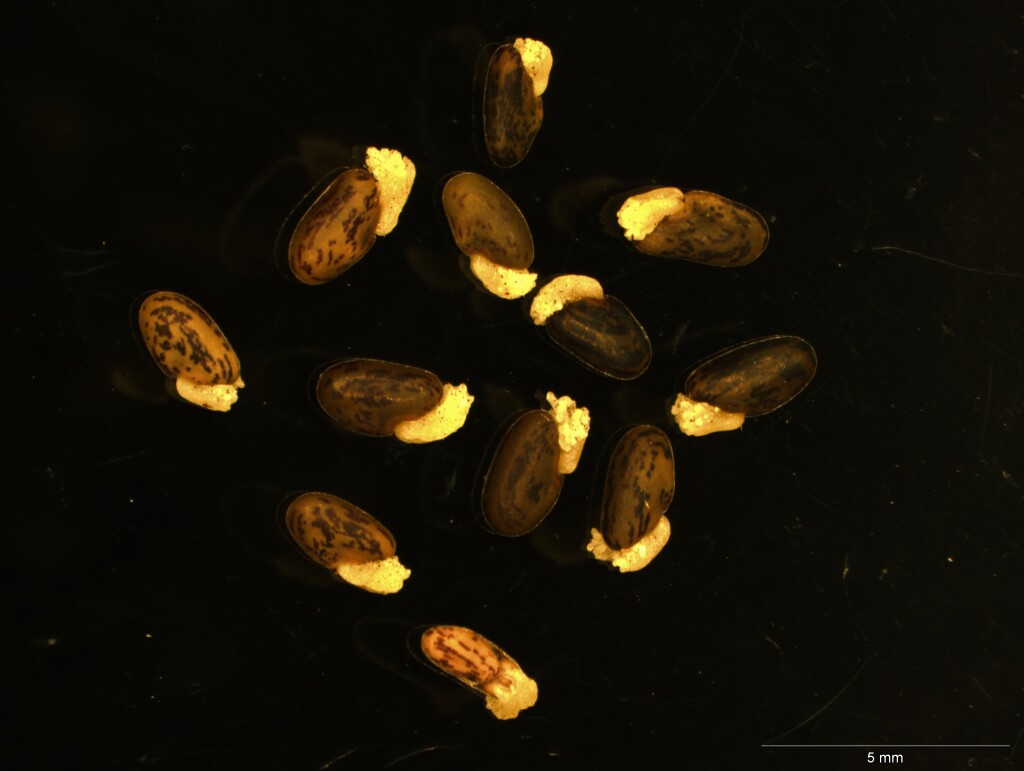Pultenaea mollis
Lindl. Soft Bush-peaShrub to 3 m high, erect or spreading, occasionally semi-prostrate; stems terete with pale, spreading, curled or twisted hairs. Leaves alternate, narrow-linear, elliptic or terete (7–)10–20(–26) mm long, 0.3–1.2 mm wide; apex acute, not pungent; lower surface with loosely appressed, spreading or occasionally tubercle-based hairs; upper surface, when visible, glabrous; margin inrolled; stipules (1.5-)2–3(–5) mm long, usually strongly recurved, rarely appressed. Inflorescence a head-like cluster of 4–10 flowers terminating short, lateral branches; floral leaves with slightly to greatly enlarged stipules, 2–9 mm long, sometimes resembling bifid or trifid bracts, often viscid; calyx 4–8 mm long, variously hairy, often viscid; bracteoles attached at base of calyx tube, usually ovate, 2–8 mm long, variably hairy, glabrous or viscid, rarely stipular and appearing 3-lobed from base; standard 8–12 mm wide; ovary and lower half of style hairy. Pod ovate, at least half enclosed by calyx.
Wim, GleP, Brid, VVP, GipP, OtP, WaP, Gold, CVU, GGr, DunT, NIS, EGL, EGU, WPro, HSF, HNF, OtR, VAlp. Also NSW, Tas. Widespread and locally common in dry and moist forest and occasionally heathland south of the Great Dividing Range, including Grampians, Portland, Anglesea, Gembrook-Beenak forests and East Gippsland.
Corrick, M.G. (1996). Pultenaea. In: Walsh, N.G.; Entwisle, T.J., Flora of Victoria Vol. 3, Dicotyledons Winteraceae to Myrtaceae, pp. 765–793. Inkata Press, Melbourne.
 Spinning
Spinning
